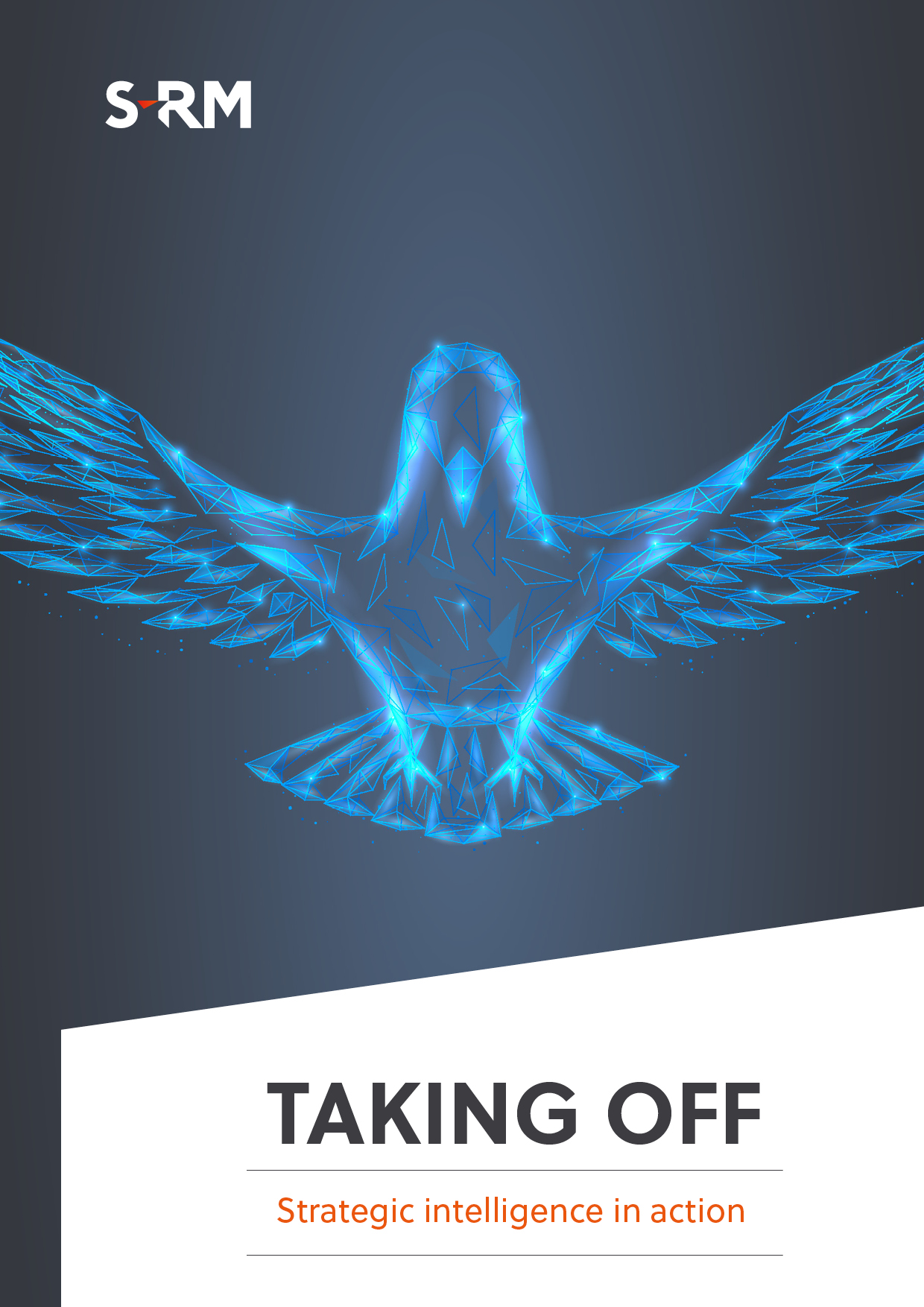From increased Ukrainian strikes in Russia, to the growing threat of proxy conflicts elsewhere on the globe, to hints of rapprochement, the direction and impacts of the war remain shrouded. For longer-term business and investment strategy considering the various futures at play will be critical. In this article Gabrielle Reid and Markus Korhonen take a look at three such futures and the possible business impacts of each scenario.
With the collapse of the Black Sea Grain Initiative, increased efforts to disrupt lines of communication and a slew of unsuccessful peace plans, fighting in Ukraine is unabating. Well into the 18th month of conflict, the ramifications of this now protracted war are shifting and businesses would do well to think through what the next phase in the conflict could mean for them. This next phase, however, is not yet defined. There are a multitude of possible futures for Ukraine and the wider world. While an exercise in seeking to predict the single outcome – at least if proved accurate – may bring some comfort that your business is adequately prepared, companies could be better served by thinking through the various trajectories for the war and their unique impacts for the global landscape.
Scenario 1: The consequences of Ukraine’s growing aggression
Where previously Ukraine’s focus has been more closely aligned with fighting Russia within its borders, an increased appetite for seeking targets in Russia may take a growing role in the conflict. Since the beginning of 2023, Ukrainian forces have carried out an increasing number of drone attacks against strategic assets including oil fields, airfields, energy infrastructure and government buildings both in Russia and Russian occupied Crimea. The furthest of these targets have included several strikes on and near Moscow, some 450 km from its closest border with Ukraine, and on the naval port in Novorossiysk, around 410 km from current Ukrainian positions on the western side of the Dnipro River. And, in late August, several drones struck Pskov Airport near Estonia, 840 km north of Kyiv. Despite western allies being keen to avoid undue escalation with Russia, and Ukrainian assurances that the use of missiles and other western equipment would remain confined within Ukraine’s borders, the supply of Storm Shadow and SCALP missiles over the past few months means that Russian targets within a 250 km radius could be easy pickings.
Accordingly, an expansion of the conflict beyond Ukraine need not be through the direct involvement of NATO and member states. Instead, an escalation in fighting in Russian occupied Crimea and into Russian territory will bring with it worsened disruption to the strategically important Black Sea region. With merchant shipping increasingly concentrated in the triangle between the Bosporus, the Romanian Danube Delta and the Russian port city of Novorossiysk, disruptions to exports from the region are near inevitable. And, the closer the realities of the war get to Moscow, the more outlandish Russia’s response may become. Russia’s strikes on grain terminals in Odesa in July were a demonstration that target profiles are expanding in this war. Given Russia and Ukraine are major contributors to global production and trade of fuel, fertiliser, and essential food commodities like wheat, maize, and sunflower oil, disruptions in agricultural production and trade will persist. Resultant price increases across these commodities will leave countries reliant on food and fuel imports especially to imported inflation, even if they are not engaged directly in trade with Russia.
Scenario 2: Cold War 2.0 and the proxy conflicts that follow
In the initial months of the war, the spectre of spillover was ever-present. The world watched Russia closely in anticipation of a possible escalation bringing Poland, or the Baltics and, by corollary NATO, directly into the fray. Yet, failures on the battlefield, coupled with a clear desire to avoid a Europe-wide war, instead have left the region in a state of ongoing brinkmanship. Should this trajectory continue, the rise of proxy conflicts across the globe seems inevitable as major powers wanting to unseat their rivals on the world stage seek an alternative to escalating war closer to home. In this scenario, areas facing existing security weaknesses could serve as flashpoints for new wars as regional players lap up the support of rival global powers eager to bolster their allies.
Already, Africa has emerged as a potential stage for the proxy wars of a Cold War 2.0. The jostling for ties in the mineral rich Sahel has seen Russia secure friendship among the military juntas in Mali, Burkina Faso and potentially Niger, while several other African states have been hesitant to condemn Russia’s war in an effort to navigate a middle road between Russia and the West. Cosying up to Russia, or indeed maintaining elusive non-alignment could muddy the trade waters, with the US already threatening punitive action against third party states for failing to make their position on Russia clear. An ever-complex global sanctions regime will be further complicated by the introduction of third-party trade restrictions or sanctions should the global divide worsen. Meanwhile tit-for-tat punitive measures could push already pressured populations against their governments, militaries, or their foreign backers. And, even if African states choose to and are successful in charting a third path of complete neutrality, as the largest regional bloc in the United Nations, representing some 28 percent of all the votes in the General Assembly, this too will have large consequences for the nature of interests pursued in a multipolar world.
Scenario 3: Glimmers of hope
Ukraine’s slow progress in its counteroffensive since June has been disappointing for western backers hoping for a decisive shift in conflict dynamics. Russian forces have had the opportunity over the winter and spring to fortify their positions and adapt their tactics to stave off assaults and limit the damage to their command-and-control structures and supply lines. The costs of the war are escalating for both sides, with Ukraine likely needing some USD 100 billion of additional aid in both 2024 and 2025 to sustain current efforts. Russia, though it still has sizeable coffers and ample manpower to tap into, is beginning to feel the impact of sanctions, with slowing export earnings and a rapidly deteriorating currency.
While this doesn’t (yet) point to either side’s determination to win the war deteriorating, the rationale to arrive at a negotiated settlement will strengthen over time. Signs point to slow but incremental movement in this direction. In August, Kremlin spokesperson Dmitry Peskov suggested Russia’s aim was to secure only those areas “written into our constitution as ours” rather than a more expansionary target across wider Ukraine, perceptibly different from the overthrow of the Kyiv government it was calling for a year ago. And while Ukraine has stood firm on its demands to continue the war until all Russian forces have been pushed out of its territories, including Crimea, it has participated in international peace talks in June and again in August (both without Russian representation) to seek the first steps in finding an acceptable deal. Notably, China sent a delegation to the talks held in Saudi Arabia in August, and while it would be generous to interpret this as a sign of wavering Sino-Russian ties, it does hint at the possibility that China may take a bolder diplomatic approach to curtailing the ongoing global devastation that the war is having on grain supplies and energy markets.
A lasting peace agreement is still a distant prospect. But longer term business planning must begin to consider the post-conflict landscape, both in Russia and Ukraine. Across industries, systematically accounting for the risks and opportunities for (re-)entry into these markets, as well as the wider global implications of a dismantled sanctions regime and normalised trading, will allow for the development of appropriate contingencies. The outbreak of the war in February 2022 – also a distant prospect by most contemporary accounts – showed the value of mapping out scenarios beyond conventional wisdom.
No ‘new normal’
With such potentially diverse ramifications of the war, businesses cannot rest on their laurels or under the assumption that they have adequately adapted to the impact of the Ukraine conflict. Rather, there is a need to remain aware of the shifting trajectories of the war and the implications for the global economy, and the geopolitical make up.
Over 2023, we have seen the importance of effectively navigating geopolitical risk rise on the risk radar of companies the world over. But unlike some potential risks to your business, geopolitical risk is dynamic and its consequences wide ranging. The war in Ukraine, and the many ways it may play out, is a constant reminder of this and the need to not only understand the world today but where it may be tracking tomorrow.



 Email Gabrielle
Email Gabrielle





 @SRMInform
@SRMInform
 S-RM
S-RM
 hello@s-rminform.com
hello@s-rminform.com

